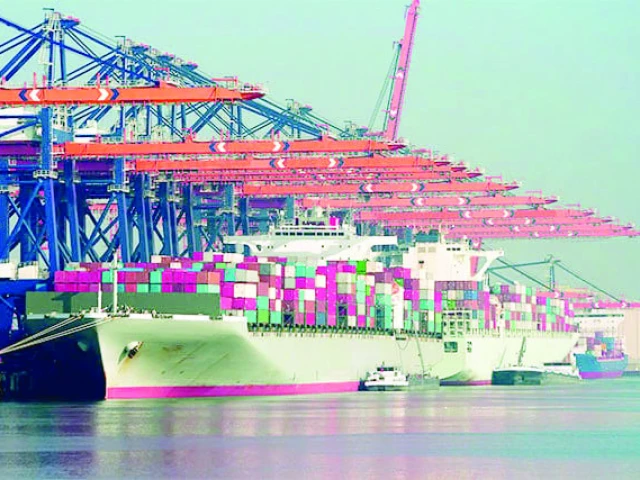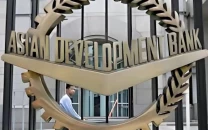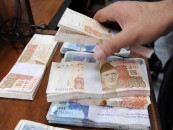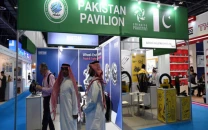Economy needs trade, not just taxes
IMF-backed policies focus on tax revenue; Pakistan risks prolonged stagnation

The International Monetary Fund (IMF)'s smooth approval of the staff-level agreement for the first review of the ongoing $7 billion loan reflects its confidence in the government's efforts towards macroeconomic stability. It has particularly noted success in controlling inflation – now at its lowest since 2015 – and the overall improvement in financial conditions.
The IMF also acknowledges Pakistan's significant climate-related challenges that require external support. To address these, it has agreed to provide an additional $1.3 billion under a new facility for climate and sustainability challenges.
While the IMF is optimistic that Pakistan's economy will gradually improve, it has also highlighted risks if policies are loosened or if global events – such as rising commodity prices, trade restrictions, or climate-related shocks – disrupt progress. To mitigate these risks, it has recommended protective measures, including strengthening public finances, increasing foreign reserves, and removing economic barriers.
Specifically, it has emphasised reducing public debt, enhancing revenue mobilisation, addressing energy sector inefficiencies, and improving the governance of state-owned enterprises.
Stabilising the economy is essential, but it has come at the cost of worsening poverty. According to the World Bank, poverty surged by seven percentage points in 2024 alone, reaching 25.3% and pushing 13 million more people below the poverty line.
Using the lower-middle-income threshold of $3.65 per day, the bank estimates that 40.5% of Pakistan's population lived in poverty in FY24 – an increase of 2.6 million people from the previous year.
Peer countries that slashed poverty over the past two decades did so by expanding international trade – not relying on increasing taxation or income support programmes. Yet, IMF-driven pressure to raise Pakistan's tax-to-GDP ratio has trapped the economy in stagnation and contraction of the industrial sector. Trade – the proven engine of industrial growth – is glaringly absent from the IMF's prescription.
In its 2022 study, the IMF correctly identified the main reason for Pakistan's stagnancy: Pakistan remains a highly closed economy, relying heavily on import tariffs for tax revenue. Similarly, Finance Minister Muhammad Aurangzeb, while addressing the Boao Forum in China last week, stated that although globalisation has lifted over a billion people out of poverty, it remains fundamentally unequal.
Indeed, it is so, but it has left out only those who choose to remain isolated from the global trading system. No outsider propelled China's export success – it was China's own efforts, including lowering trade barriers that enabled its integration into the global economy.
Whenever the IMF pressures Pakistan to increase tax revenues, the most convenient method for the government is to impose higher taxes on imports. However, a well-established economic principle states that higher import duties act as a tax on exports.
Despite these well-known consequences, the government imposed additional customs duties and regulatory duties (RD) on about 3,000 products in the last budget. The IMF, which closely monitors all budgetary measures, was undoubtedly aware of these changes. Given its emphasis on revenue generation, it is highly likely that these new duties were introduced with its tacit approval.
Beyond high tariffs, another fundamental flaw in Pakistan's trade policy is its long-standing tariff cascading system. A recent World Bank study highlights that Pakistan and Egypt have the highest cascading import tariffs globally. This means there is a significant disparity between tariffs on raw materials and components versus finished products, making it far more profitable for industries to sell in the domestic market rather than export.
Historically, many developing nations followed similar import-substitution policies in the last century, but today, only a few large developing countries such as Egypt, Pakistan, Nigeria, and Argentina continue this outdated approach.
If the IMF truly aims to enhance Pakistan's competitiveness and prosperity, it must shift its focus from advocating a higher tax-to-GDP ratio to promoting a higher trade-to-GDP ratio. At just 28%, Pakistan's trade-to-GDP ratio lags far behind the South Asian average of 43%.
Bridging this gap requires a fundamental overhaul of trade policy, primarily by reducing excessive protectionism through lower tariffs and import taxes. Without this shift, Pakistan will remain stuck in a cycle where imports outpace exports, exacerbating foreign exchange shortages and deepening poverty.
The writer is a Senior Fellow at the Pakistan Institute of Development Economics (PIDE) and has previously served as Pakistan's ambassador to the WTO and the FAO's representative to the United Nations in Geneva



















COMMENTS
Comments are moderated and generally will be posted if they are on-topic and not abusive.
For more information, please see our Comments FAQ